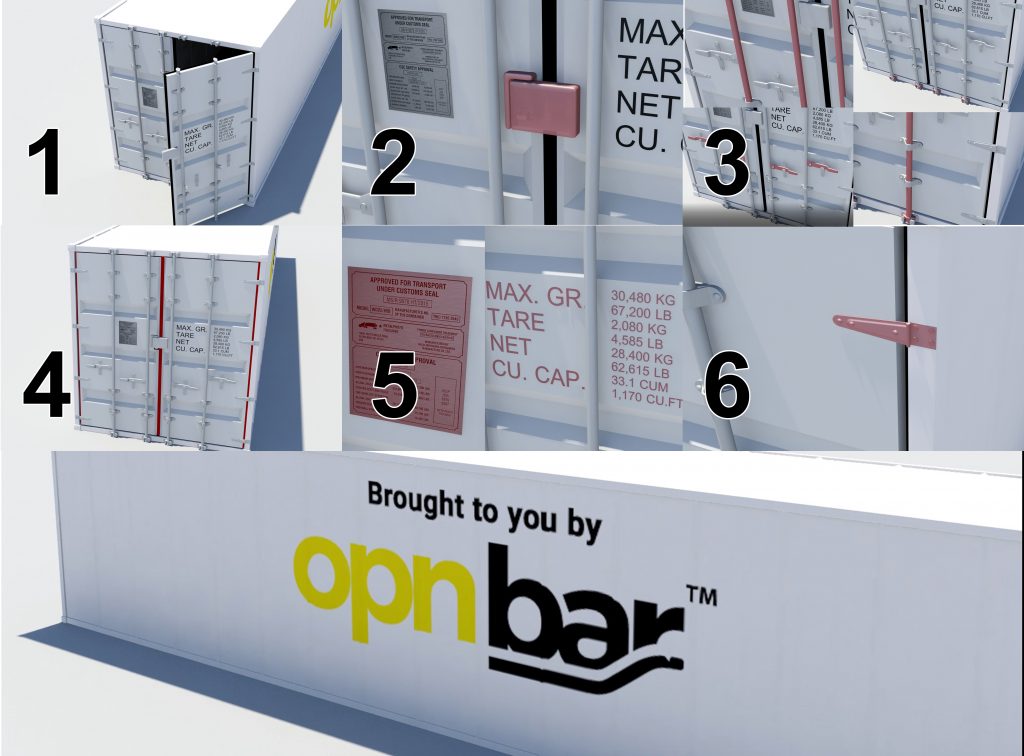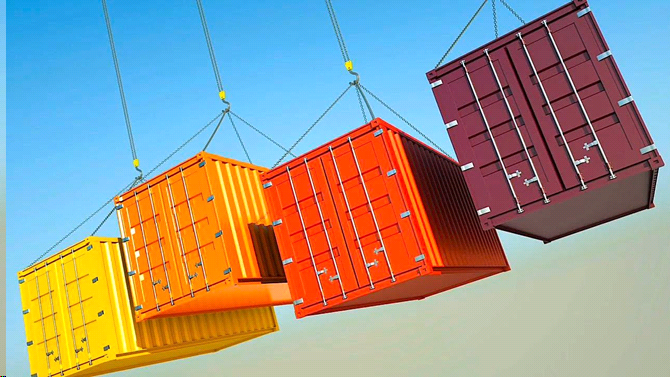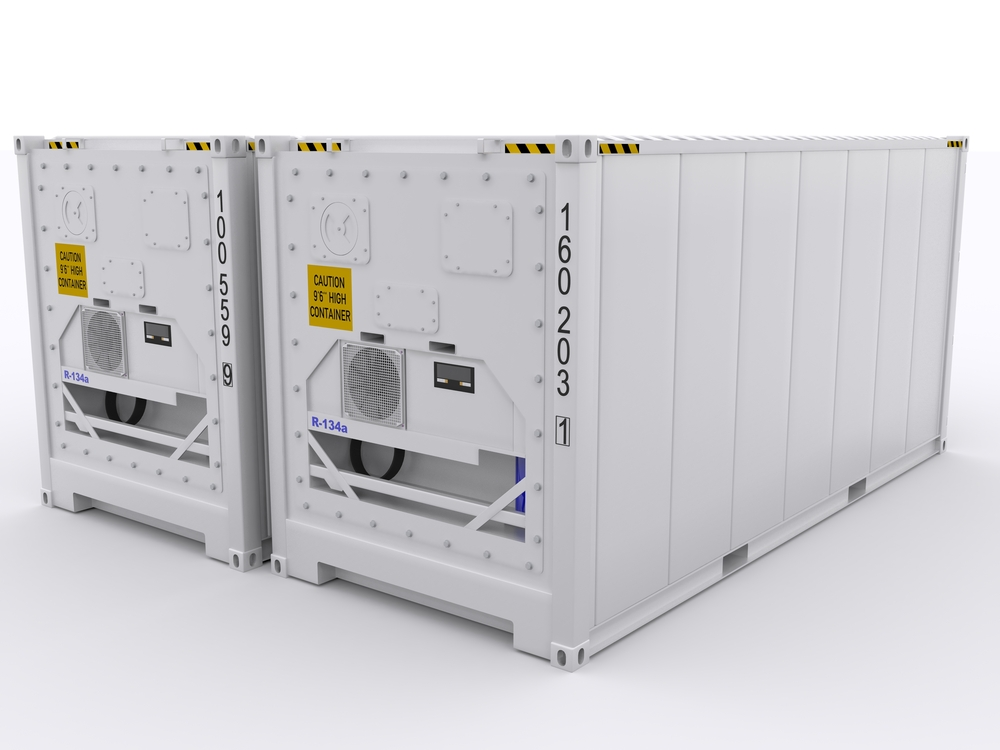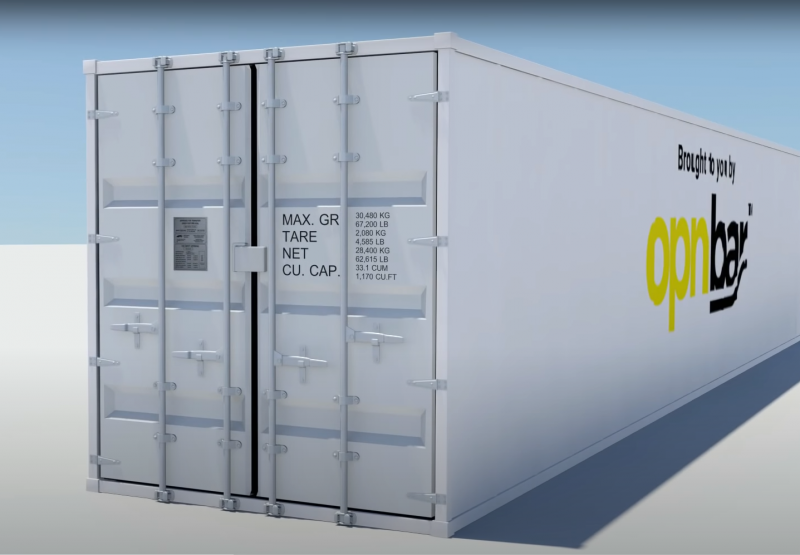Shipping Containers for Sale - Guide to Buying
Guide to Shipping Containers
Shipping containers have revolutionized the way goods are transported around the world. Available in standard sizes, these large metal boxes made transporting goods by sea, land and air easier and more cost-effective. This article takes a closer look at shipping containers, their history, uses and impact on global trade.

10053 Whittwood Dr, Suite 11284 Whittier,
CA 90603 USA
657-667-6227
https://www.shippingcontainertool.com/what-is-a-shipping-container/
History of Shipping Containers
The history of shipping containers dates back to the beginning of the 20th century, when the need for more efficient ways to transport goods over long distances grew. In 1955, American shipping entrepreneur Malcolm McLean launched the first standardized shipping container. McLean was looking for ways to reduce the time and cost of loading and unloading the cargo of ships, and he realized that the solution could be the use of containers that could be loaded directly onto ships.
McLean's idea was met with skepticism at first, but he persisted and founded Sea-Land Service to develop and promote the use of standardized containers. From the 1960s, container shipping became a widely accepted practice in shipping and later became the most common method of transporting goods worldwide.
Uses of Shipping Containers
Shipping containers have many uses besides transporting goods. One of the most popular uses is housing. The durable metal construction and modular design of shipping containers make them ideal for creating affordable and durable homes. Architects and builders have used shipping containers to create everything from single-family homes to multi-story apartment buildings and even office spaces. Another popular use for shipping containers is storage. Shipping containers are weatherproof and secure, making them a great option for storing things like tools, equipment and vehicles. They are also often used for temporary storage during construction projects or as mobile storage for businesses. Shipping containers are also used in pop-up shops and restaurants. The modular structure of transport containers allows them to be transported and installed in different locations. This makes them a popular choice for businesses that want to create a unique and mobile front end.
Impact of Shipping Containers on Global Trade
The use of shipping containers significantly affected world trade. Before the introduction of container shipping, goods were transported in a number of different ways, including bulk in a hold vessel, in bags or boxes, or on pallets. This made loading and unloading slow and laborious and often resulted in damage to goods. With the introduction of standardized shipping containers, loading and unloading became much faster and more efficient. Containers can be easily moved from ship to truck for training without unpacking and repacking. This reduced the time and cost of transporting goods, which made it possible to move larger volumes of goods more economically. Shipping containers are cargo containers that allow goods to be stored for transportation in trucks, trains, and ships, enabling intermodal transportation. They are usually used to transport heavy materials or pallets. Shipping containers are used to protect transported cargo from impacts and adverse weather conditions and to keep stored products intact. They were first used in the 1950s and were originally developed for commercial shipping. Shipping containers are called ISO containers, junction boxes, rail containers, intermodal containers and certain truck trailers. This industry term refers to the International Organization for Standardization (ISO), which is the largest developer of international standards and the organization that developed standard dimensional requirements for steel containers used worldwide. The ISO standard container design allows for intermodal transport, which means moving containers from one mode of transport to another, such as a ship, train or truck, without having to load and unload and reload the contents. Shipping containers are used to protect transported cargo from impacts and adverse weather conditions and to keep stored products intact. They were first used in the 1950s and were originally developed for commercial container shipping. Depending on the type of product being shipped, the shipping container may differ in terms of dimensions, structure, material, etc. Later, the characteristics of these shipping containers were standardized, which accelerated transport without the need to load and unload the goods on the way.

Buying a Shipping Container for Sale
Buying shipping containers is a popular choice for both individuals and businesses. Designed to transport goods by sea or land, these durable metal boxes are known for their durability, strength and safety features. One of the most important benefits of purchasing shipping containers is their versatility. They can be used for a variety of purposes, from warehouses and workshops to temporary offices and living spaces. Many people also want to turn shipping containers into small homes or vacation apartments, taking advantage of their modular design and portability. There are a few things to keep in mind when considering purchasing a shipping container. First, it's important to think about the size of the tank you need. Shipping containers come in different sizes, the most common being 10 feet, 20 feet, and
0 feet. When choosing the right size, consider the purpose of the container and the size of the room. It is also important to think about the condition of the tank. Used shipping containers are widely available and can be purchased cheaper than new containers. However, it is important to thoroughly inspect the tank before purchase to ensure that it is in good condition and has no damage that could compromise its structural integrity. Another factor to consider is the location of the tank. If you are going to use a container to store your belongings, you need to make sure that you have enough space to put it. In addition, if you intend to transport a container, you must arrange the transport and secure the necessary permits and approvals.
There are different types of Shipping Containers for different types of transportation:
Common Types of Shipping Containers
Shipping boxes are another name for the most commonly used junction boxes on the market. Transport containers are usually suitable for all types of dry goods: trays, boxes, bags, machinery, furniture, etc. There are different types and sizes of shipping containers, each designed for a specific purpose. The most common types are:
Dry Containers: These are standard containers used to transport dry goods such as electronics, clothing and furniture.
Refrigerated containers: These are insulated containers used to transport perishable goods such as fruits, vegetables and medicines. They have built-in cooling devices that keep the cargo at a certain temperature.
Flatbed containers: These containers are used to transport oversized cargo such as machinery, vehicles and construction materials. They have folding sides that make loading and unloading easier.
Open Containers: These containers are designed to transport goods that are too tall to fit in a standard container. They have a removable roof that allows you to refill.
Tank containers: These are used to transport liquids and gases such as chemicals, fuels and food. They are built in a cylindrical shape and are often used for hazardous materials.
Dry storage containers are your typical standard shipping containers. The main structure is made of steel and hermetically sealed, without cooling or ventilation. Sizes are usually 20', 0' or
0'

High Cube: The High Cube class allows a 13% increase in the internal cube volume and can withstand even the heaviest loads (coal, tobacco, etc.).
Modular containers for the data center: As technology advances, the need for reliable and efficient data centers becomes more and more important. One solution that has gained popularity in recent years is the use of shipping containers as housing for data centers.
Refrigerated Shipping Container
Refrigerated containers provide a temperature controlled environment. They have a power supply that connects to power sources during transport. This allows products to be transported at a uniform temperature during the journey. They have the ability to reduce the temperature from -18 ° to 30 °. In addition to the Tall Cube, there are 20-foot and 40-foot models. This type of shipping container is especially recommended for transporting food or products that require low storage temperatures.
Open Top Shipping Container
Open shipping containers have the same dimensions as regular containers, but are open at the top because they have a removable fabric roof. These containers facilitate the transportation of large loads.
Flat Rack Shipping Container
Flat Rack shipping containers are like Open Top, but they also lack side walls and in some cases even front and back walls. They are used for non-standard loads and are paid in the same way as Open Top.
Open Side Shipping Container
Open Side shipping containers have the same dimensions as standard containers; 20 or
0 feet except that they have a side opening. This makes it possible to transport very long objects whose dimensions prevent them from being loaded through the rear door.
Tank Shipping Container
Tank containers are used to transport liquids and are designed to transport dangerous substances such as toxic, corrosive, flammable chemicals, as well as oil, milk, beer, wine, mineral water, etc. They have the same dimensions as dry containers, but their structure is different because they have a polyethylene container inside.
Ventilated Shipping Containers
Ventilated shipping containers are designed to transport products such as coffee or cocoa beans, which must be ventilated during transport; sometimes these units are called "coffee containers".
Modular Containers for the Data Center
As technology advances, the need for reliable and efficient data centers becomes more and more important. One solution that has gained popularity in recent years is the use of shipping containers as housing for data centers. One of the most important advantages of using shipping containers in data centers is their scalability. As a company grows, it can simply add more containers to its existing infrastructure. This enables a more flexible and modular approach to data center design and helps reduce the risk of downtime due to equipment failure.
Shipping Container Dimensions
Shipping containers come in many different sizes, each with their own standard dimensions. These metal boxes are often used to transport goods across oceans and continents, making them an integral part of the global economy. The most common container sizes are 10 feet, 20 feet and
0 feet. A standard shipping container is 8 feet wide and usually 8 feet 6 inches long. These dimensions are defined by the International Organization for Standardization, ISO, which is responsible for developing international standards. The 10-foot container is the smallest and least used container. This size is ideal for those who need a small storage space and is easily transported by truck or train. The 20-foot shipping container is the most commonly used container and is suitable for various purposes, such as storing or transporting goods. This size is easy to transport and can hold a significant amount of cargo. A
0-foot shipping container is the largest and most spacious shipping container available. It is ideal for transporting large quantities of goods or for use as a storage unit for oversized equipment or machinery. In addition to the standard sizes mentioned above, other non-standard container sizes are also available. These containers are usually custom-made and can be used for various purposes such as pop-up shops or mobile offices. It is important to note that the dimensions of the shipping container may vary slightly depending on the manufacturer. Therefore, it is very important to check the exact dimensions of the container before buying or arranging transport.Shipping Container Door Diagram and Troubleshooting
Now we are going to run through the essential parts of a shipping container.
- For a door to work, you need hinges. Pins hold the shipping container's hinges together through a barrel. In certain cases when doors are difficult to open, hinge pins and blades may be seized due to corrosion. Each door is fitted with 2 to 4 vertical lock rods to enable opening, closing and locking of the doors.
- The door handle rotates the lockbar to initiate the door opening process by forcing the cams out of their keepers. Each door handle has a door locking handle retainer that slides over the door handle when in locked position.
- At the end of each lock rod is a cam welded in place which engages with knuckles, also known as cam keepers. The action of engaging the cams to the keepers forms an anti-racking function. In certain cases, often unfortunately too many, contents of the shipping container may have shifted causing shipping container doors and lockrods to warp.
- When opening a shipping container, start with the right hand door first. Swivel the handles, engage the cams and keepers, and twist both door handles. Closing the doors is just a reverse of this process.
- The lock box is a steel box welded to the right hand door which overlaps a staple welded to the left hand door. A padlock, normally CISA type 285 66 can then be attached inside the lock box through the staple and is then protected from direct attack, hindering attempts to gain entry to the container.
- ISO markings and a consolidated data plate allow worldwide intermodal transport and are updated as necessary. Take note that customs authorities in some countries may also have their own container seal regulations as part of their national security.
- Rubber gaskets are fitted to the container doors during the manufacturing process and prevent water ingress. Door gaskets are designed to present two or more fins against the structure or adjacent door. These are generally flexible but when the gasket is damaged, they may become stiff thus jamming the door closed, or preventing it from being closed.
- Doors
Two door leaves are fabricated from two vertical rolled hollow sections and 2 horizontal c section members. The frame is infilled with corrugated steel paneling.
These are normally attached to the rear corner posts each with four drop forged steel hinge blades. The blades allow 270 degree opening which allow the doors to swing back against the container side wall.
(Cargo may shift during transit. Look at the container to make sure that the doors are aligned and level, both top and bottom. In cases where the container frame is racked and the door gear will not operate correctly.)
- Lockbox
The lock box is a steel box welded to the right hand door which overlaps a staple welded to the left hand door. A padlock, normally type CISA type 285 66 can then be attached inside the lock box through the staple and is then protected from direct attack, hindering attempts to gain entry to the container.
- Lockrods, cam keepers, handles
Each door is fitted with 2-4 vertical lock rods to enable opening, closing and locking of the doors.
At the end of each lock rod (top and bottom) is a cam welded in place which engages with knuckles, also known as cam keepers.
The action of engaging the cams to the keepers forms an anti-racking function.
(In certain cases, often unfortunately too many, contents of the shipping container may have shifted, or containers even dropped, causing shipping container doors and lockrods to warp)
The door handle rotates the lockbar to initiates the door opening process by forcing the cams out of their keepers. Each door handle has a door locking handle retainer that slides over the door handle when in locked position.
- Rubber gaskets
Rubber gaskets are fitted to the container doors during the manufacturing process and prevent water ingress.
(Door gaskets are designed to present two or more fins against the structure or adjacent door. These are generally flexible but when the gasket is damaged, they may become hard or blocked thus jamming the door closed, or preventing it being closed.)
- ISO markings and CSC plate
ISO markings and a consolidated data plate allow worldwide intermodal transport when left in place and updated as necessary.
- Hinge pins
Of course for a door to work, you need hinges.
(In certain cases when doors are difficult to open, hinge pins and blade are seized due to corrosion.)
Choosing the Right Company for Buying a Shipping Container
When doing research in finding the right Shipping Container, follow some of these tips:
Research Online
Choose which companies have a good track record of excellence and reputation. Read reviews and what other customers have to say.
Check for Availability
If you are shipping from various locations, check for availability if containers can be delivered to your required areas.
Check for Best Pricing
If money matters, you can find used container resellers online that might be able to offer half the price on used containers.
Check for Good Customer Service
If you plan to order often, you might want to check for good customer service. Ask potential container companies a question through email or their online customer service. See how fast they respond.
Check for Warranty
Check with companies to see if they offer any warranties or buy back or trade in plans.
There are millions of Shipping Containers in use around the world, and a lucky few get a second life as repurposed shipping container structures. While they look a bit plain and boxy to the untrained eye, shipping containers play a critical role in our lives, whether embarking on ocean crossings to deliver the goods we use every day or venturing into a second life as a container structure.
Here are Some Fascinating Facts about Shipping Containers
- Shipping Containers can be safely stacked nine-high.
- Well-maintained Shipping Containers hold 759, of their original value for 25+ years.
- There are over 37 million Shipping Containers in use around the world.
- A Shipping Container floor can hold up 55,000 lb. of goods without warping.
- Shipping Container flooring is made of 1-1/8” marine grade plywood.
- Most Shipping Containers are 20 feet or 40-feet long.
- Shipping Containers are made of 16-gauge corten steel.
- Common container modifications include: personnel doors, windows flooring, shelving, work stations, insulation, climate control & even restrooms.
Fun Ways to Use Shipping Containers
Shipping Containers are not just used for cargo these days. There are many innovative and imaginative uses you may like to consider.
Here are few ideas of how shipping containers have been used for modern, cost effective buildings.
Homes
The trend to build cost-effective homes from recycled shipping containers started in USA and has reached Australia.
Art Galleries
Architect, Tomokaza Hayakawa designed an art gallery in Japan using two shipping containers stacked on each other.
Drive-Thru Coffee
Starbucks in Washington have used four old shipping containers to create an architect designed drive-thru store.
Cafes
A cafe in Footscray (Melbourne) called Rudimentary has been built using three 40-foot shipping containers.
Polar Stations
India has built a Polar Station in Antarctica using 134 shipping containers. They cover three floors and are well insulated for the weather conditions.
A well-maintained Shipping Container can hold 75% of their original value for 25+ years. Every day, container ships transport goods all over the world on the international seas.
Shipping Container Opening and Closing Tool
Shipping containers often take a beating, traveling around the world, being exposed to freezing conditions and rust due to seawater or when the frost has melted.
During the cold season, and in freezing parts of the world, our shipping container tool can benefit the opening and closing of frozen shipping container doors and hard to open or rusted containers.
Injuries often occur as a result of personnel trying to open and close difficult container doors, and often are the result of inappropriate techniques being used to open them.
To aid in opening and closing shipping container doors, we introduce OPNBar.
A Shipping Container (also known as Intermodal Container, ISO Container,Railroad Container, and certain Truck Trailers) is a large standardized shipping container, designed and built for intermodal freight transport. Shipping Containers can be used across different modes of transport. They can go from ship to rail to truck, without unloading and reloading their cargo.
The metal doors on the shipping containers on these containers are standardized. Shipping Containers use the same type and style of doors and locking bars, which our tool can be used.
Lengths are as follows: 20′, 40′, 45′, 48′, 50′, 53′. All these containers are globally used to transport cargo. The 53′ length is now, the new the standard length.
Here are some likely reasons a Shipping Container door will not open or close. Visit https://www.shippingcontainertool.com/what-is-a-shipping-container/ to find out how to overcome some of these issues.
Doors and lockrods may warp or container frame is racked so that the door gear will not operate correctly. This may be caused by cargo shifting during transit. Look at the container to make sure that the doors are aligned and level, both top and bottom.
The hinge pins and blade are seized due to corrosion.
The door gasket has been damaged and is preventing opening. Door gaskets are designed to present two or more fins against the structure or adjacent door. These are generally flexible but when the gasket is damaged, they may become hard or blocked thus jamming the door closed, or preventing it being closed.
Water has become trapped between frozen shipping container doors, particularly relevant to refrigerated cargoes, or containers with moisture releasing cargoes in cold weather.


